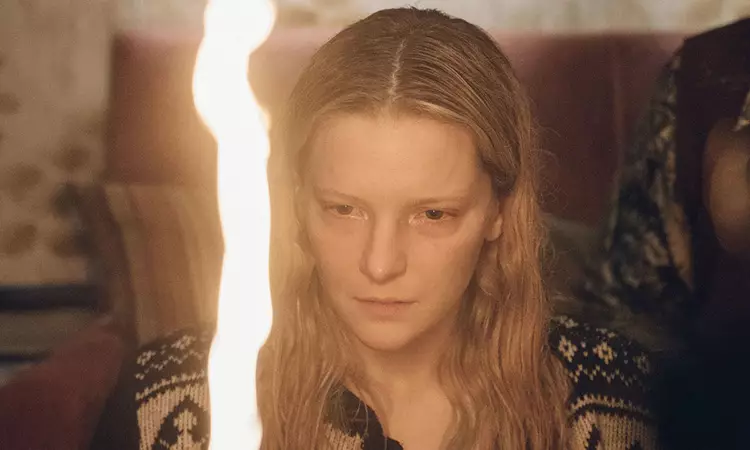Daniel Kokotajlo’s latest endeavor, Starve Acre, draws on quintessential influences from the realm of folk horror, reminiscent of classic works like Jerzy Skolimowski’s The Shout and Robin Hardy’s The Wicker Man. Set against the evocative backdrop of Yorkshire, the film skillfully intertwines sound, visuals, and narrative to create an atmosphere thick with tension and unease. Adapted from Andrew Michael Hurley’s eponymous novel, Kokotajlo’s adaptation showcases his ability to conjure an unsettling mood, though the emotional resonance of the film occasionally falters amidst its stylistic efforts.
At the center of Starve Acre is Richard (Matt Smith), an archaeologist grappling with personal loss. After the passing of his father, he relocates with his wife, Juliette (Morfydd Clark), and their son, Owen (Arthur Shaw), to the titular family estate steeped in local lore and myth. Here, grief manifests in various forms, complicating Richard and Juliette’s marriage. The film thrives on its exploration of how bereavement can fracture relationships, delivering a nuanced reflection on mental health and emotional isolation. It lauds the cinematography by Adam Scarth, which radiates a haunting beauty, yet it occasionally leans too heavily into visual motifs that can feel overly familiar.
As Richard delves into his archaeological pursuits, uncovering remnants of a haunted past, Juliette seeks solace through familial connections and the enigmatic rituals of the locals. This juxtaposition is both intriguing and troubling, as their separate paths embody their coping mechanisms. While Richard is engrossed in the chilling historical implications surrounding a hare skeleton and the ominous trees connected to local legends of execution, Juliette’s journey with meditation and her sister hints at an underlying conflict. Their individual distractions reflect a poignant reality: they are both out of sync, engaged in personal battles that distance them from one another.
While both actors deliver commendable performances, the script often lacks depth in their emotional journey. Smith’s portrayal of Richard fluctuates between grief-stricken obsession and tortured curiosity, but there’s a sense that his character could benefit from further development. Juliette’s character, portrayed adeptly by Clark, at times feels like a passive counterpart rather than an equal participant in the struggle that encompasses their family.
Despite its atmospheric achievements and a well-crafted narrative, Starve Acre stumbles when it comes to fully engaging the viewer’s emotional stakes. The film’s reliance on genre tropes and familiar thematic material, while often engaging, leads to a sense of predictability. For those entrenched in the folk horror genre, certain story elements may feel recycled rather than revitalized. Though the film’s climax invites a Pet Sematary-style twist, this awaited turn does not provide the emotional impact that might be expected; instead, it highlights the narrative’s tendency to prioritize eerie aesthetics over genuine psychological depth.
Starve Acre emerges as a visually arresting entry into the folk horror genre, underscored by a potent exploration of grief and isolation. However, its emotional core occasionally feels underdeveloped, leaving audiences longing for a deeper connection to its characters and their struggles. While it richly evokes the atmospheric unease characteristic of its forebears, it must tread carefully to ensure its own identity does not become obscured in the shadows of familiarity.

